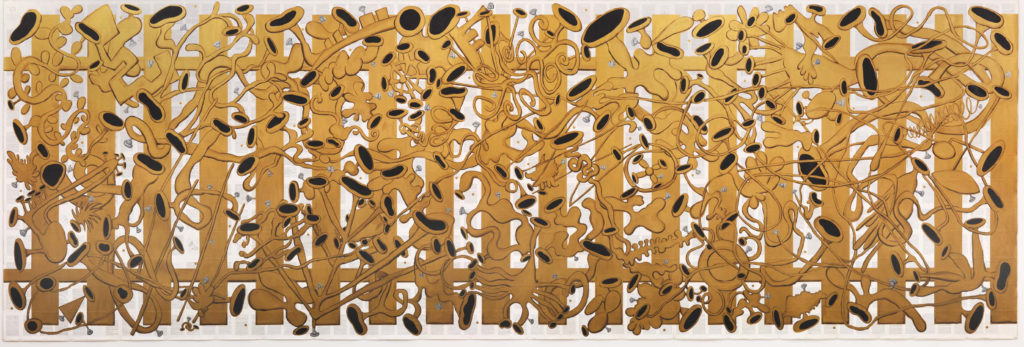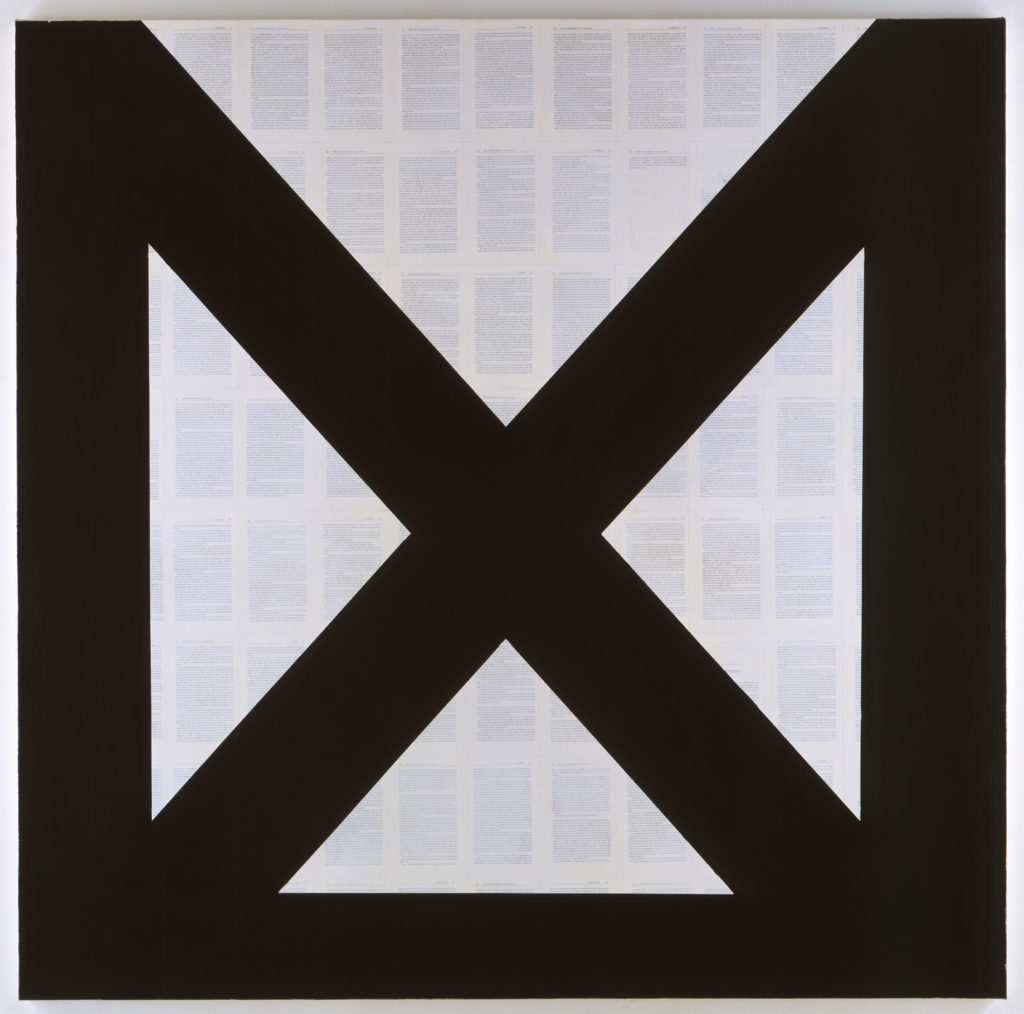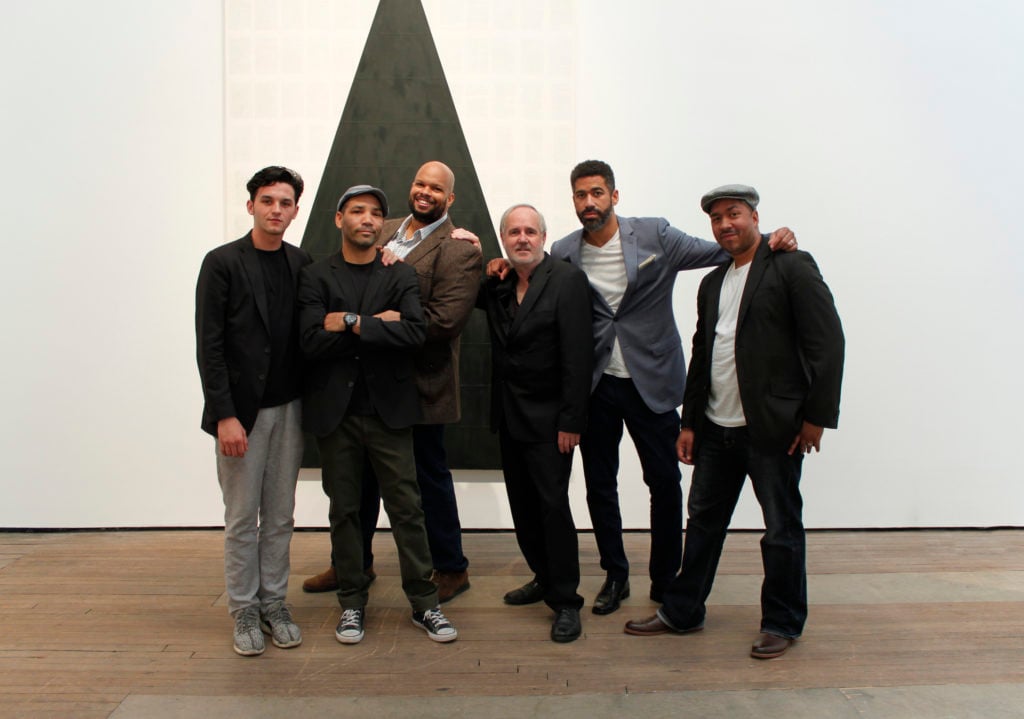The artist Tim Rollins, who sought to turn education into an art medium and whose work illustrated the power of collaboration and challenged the notion of who can make and appreciate art, has died at age 62. He passed away on Tuesday in New York of natural causes, according his gallery Lehmann Maupin.
It did not take long for tributes to begin pouring in on Twitter and Facebook, where artists, curators, and students recalled brief encounters with Rollins that reignited their belief in the power of art and education. Cynicism, it seems, was difficult to hold onto in his presence.
For more than three decades, the artist created work with K.O.S. (Kids of Survival), a fluid group of young at-risk students from the South Bronx that became one of the longest surviving collectives in the history of art.
The group’s drawings, paintings, and sculptures draw on classic literature and music, from Shakespeare to W.E.B. Dubois to Felix Mendelssohn, as source material. Often, the members make marks directly onto printed pages or sheet music.

Tim Rollins and K.O.S.’s Amerika – Everyone is Welcome! (after Kafka) (2002). Courtesy Studio K.O.S., Lehmann Maupin, New York and Hong Kong.
“Once we get going and we make a lot of junk, we always have one of those ‘eureka’ days,” Rollins told Artspace in 2012 of his process. “And then, boom, we get the idea, and we all adapt it for ourselves. So it’s quite beautiful. And it takes patience, patience, patience. You need to make tons of trash to get to your treasure.”
Rollins was born in 1955 in Pittsfield, Maine. He studied art at the University of Maine and earned a BFA from the School of Visual Arts in New York. In 1979, he co-founded the activist art collective Group Material with Julie Ault and Mundy McLoughlin. But his life’s work began in the early 1980s, when he was teaching art to special education students in the South Bronx. It was there that he launched an after-school program for his most dedicated pupils, who would go on to become the founding members of K.O.S.
The artist told Artspace that the group’s greatest achievement was challenging “elite notions of fine art that put boundaries on who can appreciate art, who can make art, and who can feel the impact of that art.”
Not long after K.O.S. was formed, it began attracting the attention of the international art world. The group had its first exhibition at Jay Gorney Modern Art in New York in 1986. Early supporters and collectors included Charles Saatchi, the Philadelphia Museum of Art, and the Museum of Modern Art in New York.
Tim Rollins and K.O.S. would go on to participate in two Whitney Biennials (1985 and 1991), documenta (1987), the Venice Biennale (1988), and the Carnegie International (1988). More recently, the Tang Museum at Skidmore College organized a retrospective of the group’s work in 2009.
“Tim was an inspiring and groundbreaking artist, educator, and activist, who touched and changed so many lives,” Lehmann Maupin Gallery said in a statement.

Tim Rollins and K.O.S.’s By Any Means Necessary (after Malcolm X) (2008). Courtesy Studio K.O.S., Lehmann Maupin, New York and Hong Kong.
Rollins’s influences ranged far and wide, from the Brazilian educator Paulo Freire (whose 1970 book, The Pedagogy of the Oppressed, was a formative text for him) to the pioneering conceptual artists Joseph Beuys and Joseph Kosuth. (Rollins studied with the latter at the School of Visual Arts.)
The artist, who was raised Baptist Pentecostal, has said that his collaborative, call-and-response art-making process and his belief in the power of personal agency was also shaped in part by his religious faith.
Around 100 members have passed through K.O.S. over the years. The current members are Angel Abreu, Jorge Abreu, Robert Branch, Daniel Castillo, and Ricardo Savinon, according to the website of Maureen Paley, who represents Rollins in London.
“I couldn’t do what I do without the kids; they couldn’t do without me,” Rollins told the New York Times in 1988. “It’s kind of like a baseball team. Without this, I’d be just another boring Conceptual artist.”
In a statement provided to artnet News, K.O.S. said that it plans to continue the work that Rollins started.
Tim was a friend, mentor and father to the surviving members of the K.O.S. collective. We are in mourning and in the process of making personal arrangements in conjunction with Tim’s wishes and deep religious faith. We want to let the many people who have come to know Tim personally or from his inspirational work as an artist, educator and community activist to respect that services will be private. But, there will be a public memorial to celebrate his life at a later time, an announcement will be made once arrangements have been settled. Please know that we are greatly moved by the tremendous outpouring of your love and kind thoughts. We want to let you know that with your help and continuing support, we do plan on continuing Tim’s visionary work.










